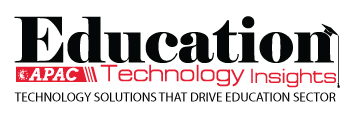THANK YOU FOR SUBSCRIBING
Be first to read the latest tech news, Industry Leader's Insights, and CIO interviews of medium and large enterprises exclusively from Education Technology Insights
Using No-Code Platforms to Address Digital Inclusion in Higher Education.
Dr. Carlos Balam Kuk Solís, Associate Vice President – Technology Innovation, Texas State University
 Dr. Carlos Balam Kuk Solís, Associate Vice President – Technology Innovation, Texas State University
Dr. Carlos Balam Kuk Solís, Associate Vice President – Technology Innovation, Texas State UniversityAt Texas State University, The Technology Innovation Office (TIO), part of the Division of Information Technology a new initiative has been put in place, the TXST No-Code Program. TIO launched this initiative as part of its focus on leveraging innovation to help promote advances in digital inclusion and digital equity. Through this initiative, TIO aims to help minority students learn about technology and gain valuable skills in software development. The TXST No-Code Program is designed to provide underrepresented students with the opportunity to learn about no-code technology and gain hands-on experience in building software and applications.
Texas State University, a state college, is a minority-majority institution, and a Hispanic Serving Institution, with a 38,000 student enrollment. It also serves a significant population of student veterans. Located in San Marcos, Texas, just south of Austin, the University is currently pursuing R1 status.
The TXST No-Code Program is open to all students, but it is specifically targeted toward minority students who may not have had the same opportunities to learn about technology and software development as their peers. The program is designed to be inclusive and accessible, and it is open to students from all backgrounds and experience levels.
“The TXST No-Code Program at Texas State University has offered its boot camps to a variety of student groups, including STEM students from the TRIO program and student veterans.”
The current engagement takes the form of a semester-long series of workshops. This engagement is referred to as a boot camp, and it is a 12-week intensive course that is held on the Texas State University campus. During the boot camp, students learn the basics of no-code technology and how to use it to create software and applications, using a product life-cycle approach. They also learn other skills associated with product design, including the development of problem statements, user personas, and journey mapping. The core toolset used in the program is the Microsoft 365 suite, especially the Power Platform layer, which makes extensive use of drag-and-drop interfaces and visual editors. Additionally, students also gain hands-on experience by creating individual projects and solutions.
The boot camp is designed to be welcoming to students from all backgrounds and experience levels. It is taught by Dr. Carlos Balam Kuk Solís, Associate Vice President for Technology Innovation. Doctor Solís is experienced in no-code technology and is passionate about teaching, digital inclusion, and digital equity.
The TXST No-Code Program at Texas State University has offered its boot camps to a variety of student groups, including STEM students from the TRIO program and student veterans. The program has also been offered to students in the local k-12 schools, and to student clubs, such as the Texas State University Girls Who Code. New training modalities are being deployed this year, including a 6-hour intensive, App in Day, which will be taught face 2 faces as well as in hybrid, and fully online modes. The latter is still a synchronous activity.
It is important to note that the TXST No-Code Program also provides students with the opportunity to gain valuable skills that are in high demand in today's job market. With technology continuing to evolve at a rapid pace, the need for individuals with digital skills and software development is only going to increase. It is projected that by 2025, 70% of business applications will be developed using no-code tools. By learning about no-code technology and gaining hands-on experience in building software and applications, students can gain the skills they need to succeed in the workplace.
Additionally, the No-Code boot camps provide students with the opportunity to connect with other like-minded individuals who are also interested in technology and software development. This can be a great way for students to network and form connections that can be valuable in the future.
Read Also
Empowering Educators through Purposeful, Connected and Transformative Learning
Empowering Students to Lead: A New Vision for Civic Learning
The Director's Playbook: Strategic Digital Transformation in Rual Hyper-Growth Districts
The Art and Architecture of Student Support
From At-Risk to At-Promise: The Language Revolution Higher Education Needs
Teaching Tomorrow: How Western Governors University Is Redefining Teacher Preparation

I agree We use cookies on this website to enhance your user experience. By clicking any link on this page you are giving your consent for us to set cookies. More info






















